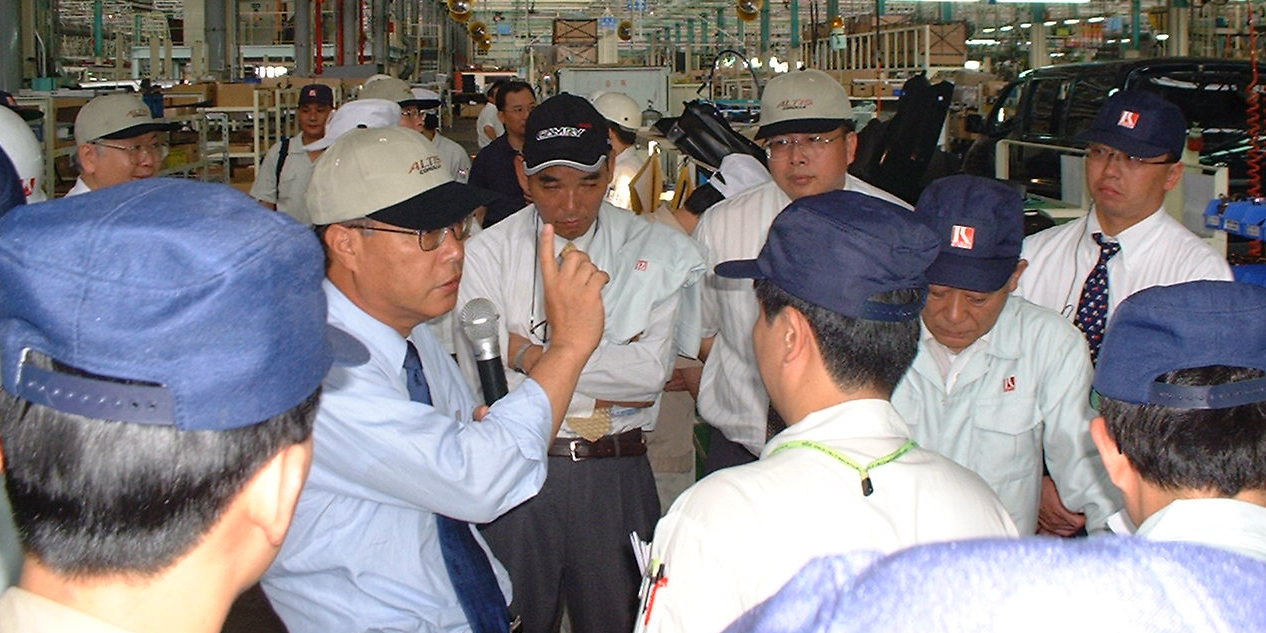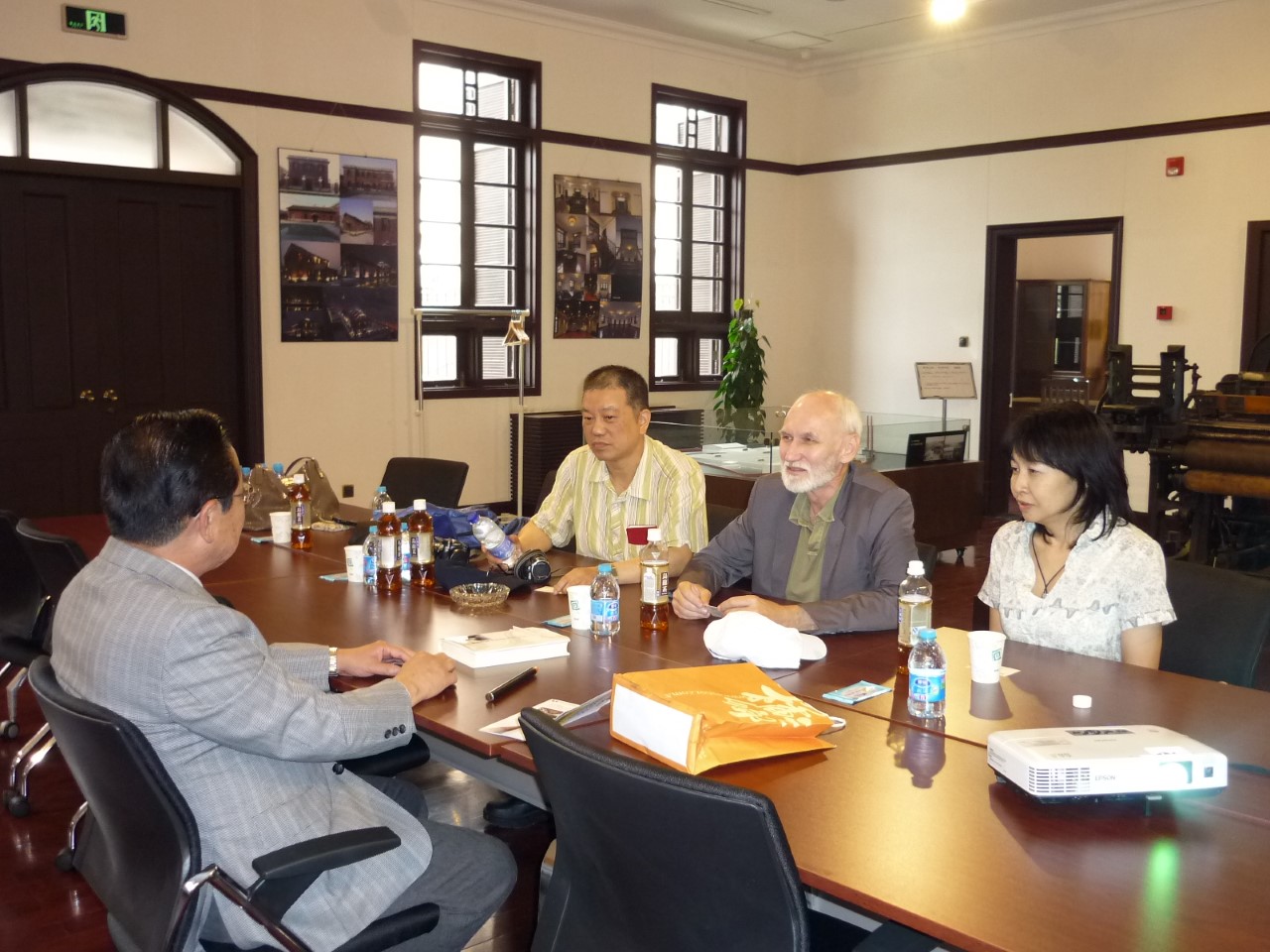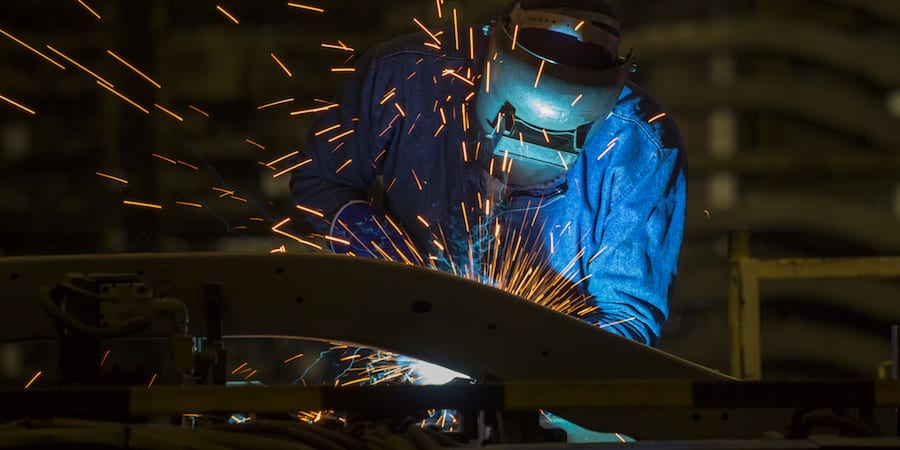
Passing down TPS across generations
FEATURE – This intimate account looks back at the time one of the authors spent working with Harada-san and how it shaped his career and encouraged him to spread TPS knowledge.
Words: Joe Lee, Toshiko Narusawa and John Shook
I first met Harada-san in January 1999 when Toyota assigned him as president of their manufacturing company in Taiwan known as Kuozui Motors, one of Toyota’s main projects overseas. I worked for him directly as general manager of production: the implementation of the Toyota Production System was my job.
The time I spent working with him has directly impacted my career – my entire life, I should say. First and foremost, I had the opportunity to learn TPS from Harada-san himself and was greatly inspired by his approach to leadership: as President, Harada-san felt the responsibility of personally leading the turnaround and the implementation of TPS at Kuozui and suppliers. I clearly remember what he told me when I asked him whether we should ask Toyota to send us a TPS instructor to support our work. “There’s no need. I will do that myself and make any TPS-related activity one of my top priorities.” he told me. I was really surprised and wondered how he’d find the time. Every month we would spend two days at suppliers and two days on our own gemba for TPS activity. We solved problems one at a time right there where they occurred, proactively. We spent less times in meetings and in the office, which gave Harada-San the time to visit suppliers.
Harada-san’s approach to teaching TPS was simple – so simple that he said that “four pages of instruction material will be enough”. Instead of applying basic tools like 5S and standardized work and reduce man-hours, we began our transformation by curbing the stagnation of production materials and promoting flow. (“People complain, but materials don’t,” he’d say.) Harada-san always emphasized the importance of these two elements, as well as letting people use their common sense to understand and solve problems by themselves. “If you can’t see people smiling, you’re doing something wrong,” he told us, encouraging us to talk to operators and help them to tackle the problems they experienced in the process on their own. He also believed that specialist staff only makes things more complicated.
At Kuozui, we rearranged working cells and followed the principle of the “strike zone” to only provide operators with the minimum amount of parts necessary, right at the place of work – the practice of Just-in-Time. Sure, that meant we would need some people to prepare the parts in advance, but Harada-san reassured us that the overall work content would be reduced. We also replaced pallets with trolleys, so that we wouldn’t need forklift trucks anymore. We improved safety, the organization of the working environment and focused a lot on visualization. Harada-san regularly participated in the kaizen presentations given by group leaders at the gemba, recognized their progress and encouraged everyone to continue improving. Gradually, we discovered the joy of TPS. The every-day work became full or experimentation and learning.
Over time, we made more progress in reducing the stagnation of materials on the floor. Using his expertise and reputation at Toyota, Harada-san guided us as we rediscovered an old “kitting” technique developed by Taiichi Ohno at the Honsha plant and tested whether it was feasible to use it in the Kuozui final and engine assembly line. (We received credit and support from Toyota’s head office in Japan.) The experiment was successful, and the technique was further developed.
In the year 2000, Kuozui developed a Set Parts Supply system (SPS) based on this kitting technique. This was possible because of Harada-san’s leadership and the local team’s tireless trial-and-error, but also the unique circumstances under which we operated in Taiwan: the country’s small-volume, very competitive market forced companies to adopt a low capital investment approach for new vehicle programs, in order to reduce fixed costs. The need to shorten our lead-time and keep our operational costs low was a great incentive to develop innovative manufacturing processes – such as the SPS system – in a relatively short period of time. Kuozui’s environment, with its small team and simple line free of heavy-duty equipment, proved ideal for experimentation and continuous improvement and allowed for a free flow of communication and harmonious working relationships.
The SPS system eventually became widely used across Toyota’s global operations to solve the problem of having to produce an increasing number of models on an existing line. In fact, Kuozui was the first Toyota factory overseas to adopt such a system, setting an example of how a non-mainstream site can produce lessons based on Toyota’s traditions that are valuable for the organization as a whole. During his visit to Kuozui in 2005, Professor Fujimoto Takahiro said that the competitiveness of a company within the Toyota ecosystem depended on “organizational capability, not the company’s size”. He also explained that Toyota’s mainstream operations – with an annual volume of 200k, a force to be reckoned with in the global market – need the support of “guerrilla-like special forces like Kuozui, equipped with a combination of the diligent work spirit of a Toyota pioneer and the ability to respond to a crisis of a leading Toyota player.”
SPREADING TPS KNOWLEDGE
There was another way in which Harada-san changed my life. He encouraged me to study, translate and spread books on TPS in Taiwan. For me, translating TPS books into Chinese was a way of learning its basics. At one point, he personally wrote a letter to Mrs. Taiichi Ohno to ask for the permission to translate “Toyota Production System” into Chinese and republish it in Taiwan. Harada-San – a first in Kuozui management – motivated employees to spread TPS and Lean Thinking and practice not only among suppliers, but also in other industries. As a motor manufacturing company, we couldn’t exist independently of society and it was eye-opening to learn how powerful TPS can be in helping the community.
Harada-san taught me that it is a leader’s responsibility to lead TPS, help others to learn, and empower front-line workers to take ownership of daily operations. He truly led by example, working hard to develop and mentor future leaders. Like the charts below illustrates, Harada-San learned TPS from Taiichi Ohno and I learned TPS from Harada-San. (Check out this video, from the Lean Summit 2018 in Portugal, to hear Harada-san explain what he learned from Ohno and transferred on to his juniors). I am part of the third generation, and I am committed to continue this 77-year journey by passing down my learning and experience and developing as many next-generation lean leaders as I can.

There is a word in Chinese – “缘”, pronounced yuan – that loosely translates into a “pre-arrangement made in heaven” or “divine intervention” in English. Our lives are full of these! In August 2018, for example, I organized a meeting between Harada-san and Michael Ballé in Nagoya and their conversation revealed that their relationship can actually be traced back to 1975 when Michael’s father Freddy (at the time, he was working for Renault) visited Toyota and Harada-san was his host. Besides, when they were teenagers, both Harada-san and Michael lived in Mexico City. What a small world!
A similar “yuan” led me to meet Marcus Chao and John Shook through the translation of Learning to See into Chinese and Toshiko Narusawa through the translation of Kaizen Express. After I introduced them to each other, Narusawa-san helped Harada-san with the editing of the Japanese version of Management Lessons from Taiichi Ohno. Thanks to the global lean community, we all became good friends.
As I look back at my career, I can’t help but think that meeting Harada-san was one of the most wonderful examples of “yuan” in my life.
THE AUTHORS

Read more


FEATURE – Through this intimate anecdote from her days at Toyota Motor Manufacturing Kentucky, the author tells us of her experience with standardization… and of the deep leadership lessons hiding behind it.


SERIES – In the final article in their series on lean process development, the authors discuss what it takes to get started with their 6CON process development model.


RESEARCH – A recent report by the National Audit Office looks at what works and what doesn’t when lean management is applied in UK government organizations.


CASE STUDY – Around four years ago, classified ads magazine Auto Trader printed its final issue and moved to a web-only business model. As its digital transformation progressed, the company discovered why real innovation must become business-as-usual.

